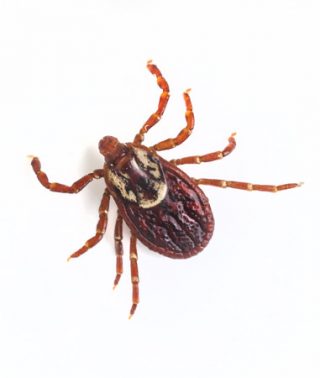
People living in tick-endemic areas around the world are being warned of an increasingly prevalent, potentially life-threatening side effect to being bitten: developing a severe allergy to meat.
The link between tick bites and meat allergies was first described in 2007, and has since been confirmed around the world. Sufferers of “tick-induced mammalian meat allergy” will experience a delayed reaction of between two and 10 hours after eating red meat. Almost invariably, they are found to have been bitten by a tick – sometimes as much as six months before. Although most cases of tick bites of humans are uneventful, some immune systems are sensitive to proteins in the parasite’s saliva and become intolerant of red meat and, in some cases, derivatives such as dairy and gelatine. Poultry and seafood can be tolerated, but many sufferers choose to avoid meat entirely. Cases of the emergent allergy have been reported in Europe, Asia, Central America and Africa, but it is most prevalent – and on the rise – in parts of Australia and the United States where ticks are endemic and host populations are booming. Bandicoots and other small native mammals are flourishing along the east coast where the Australian paralytic tick is endemic. The Lone Star tick is widespread throughout the US, but meat allergies have been reported in the south-eastern states, home to growing herds of white-tailed deer. But tick bite-induced anaphylaxis – the most acute allergic reaction, which can result in death – is rare in countries other than Australia. Around Sydney’s northern beaches, where ticks are common, it is reportedly as prevalent as peanut allergies. Meat allergies are exceedingly rare in adults who have not been bitten by ticks. The link was first reported in November 2007 by Sheryl van Nunen, a clinical immunology specialist at the Royal North Shore hospital in Sydney. Van Nunen told Guardian Australia that she had observed the association “some years before” 2007. She now diagnoses one to two patients every week. Jana Pearce was diagnosed with mammalian meat allergy by Van Nunen after suffering an anaphylactic shock in May 2010. She had been bitten by a newly hatched tick 10 days before and had developed a “massive” rash. She had no history of allergies, she told Guardian Australia. “I’d never taken an antihistamine before in my life. I thought people who took antihistamines were wimps.” Despite having been hospitalised and revived with CPR, Pearce said she “didn’t take [the diagnosis] seriously” but she did not eat red meat regularly. When she ate it again in May 2012, she had another more serious anaphylaxis and had to be revived by defibrillation. “The second one was where I was out of denial and into reality,” she said. Pearce was living in Lindfield on the upper north shore of Sydney at the time of her shocks; she now lives in Hobart, Tasmania, where there are fewer ticks: “I’m a tick refugee.” Sufferers may not react every time they eat red meat, and some treatments of it, such as bacon, ham and prosciutto, can often be safely consumed. Due to the role of cofactors like exercise, alcohol consumption and other medication in allergic reactions, and the risk of death that comes with anaphylaxis, many often follow vegetarian or vegan diets. Sufferers are also advised to prepare their food at home, as fish and poultry are often combined with mammalian meat products such as stock, and to avoid cross-contamination between utensils and cooking surfaces. Read the entire article on The Guardian.






